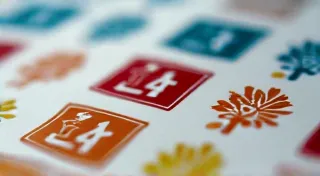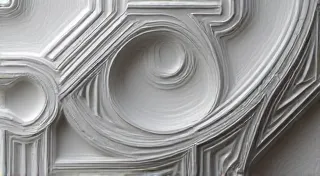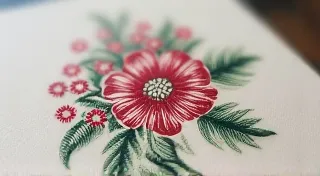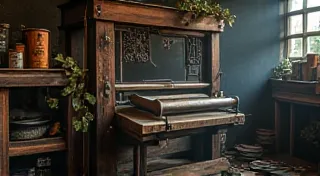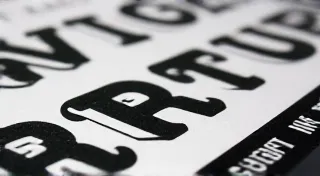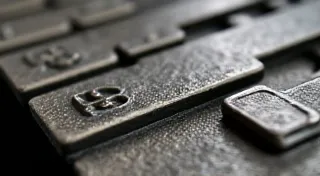The Rise of Modern Letterpress: A Contemporary Revival
For centuries, letterpress printing was the dominant method of producing books, newspapers, and everything in between. Then, offset printing and digital printing technologies took over, relegating letterpress to a niche practice, largely confined to museums and historical demonstrations. But in the 21st century, something remarkable has happened: letterpress is experiencing a vibrant revival. It’s no longer a relic of the past; it’s a thriving, contemporary art form with a dedicated following and increasingly diverse applications.
So, what sparked this resurgence? Several factors contributed to the modern letterpress movement. The increasing desire for handcrafted goods, a backlash against the mass-produced uniformity of digital printing, and a renewed appreciation for the tangible, sensory experience of paper and ink all played a significant role. People are craving authenticity and a connection to the creative process – something that letterpress uniquely delivers. This isn't just about nostalgia; it’s about a deliberate choice to value artistry and the imperfections inherent in a handmade process.
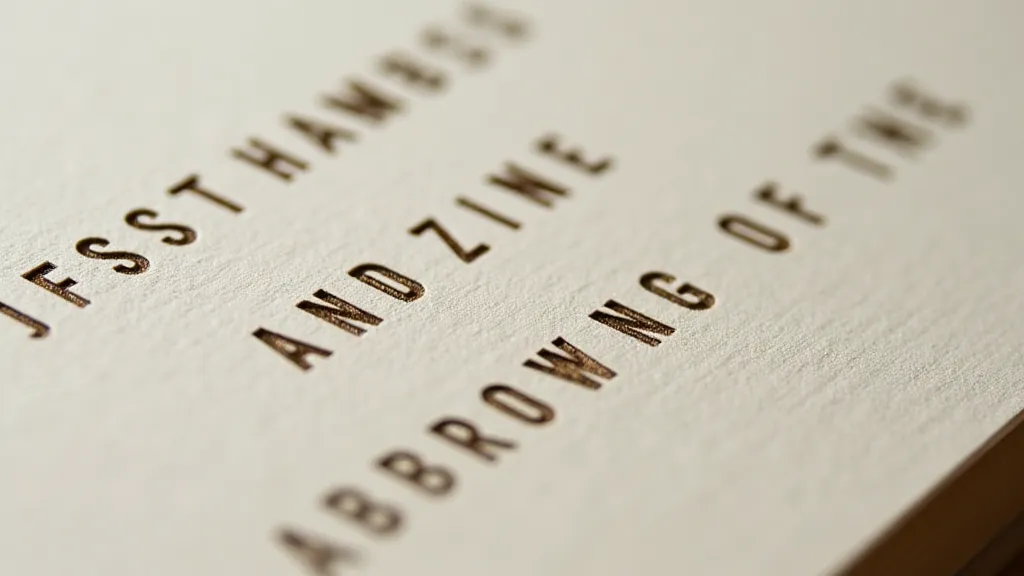
Beyond the Basics: Contemporary Applications
While historically used for large-scale printing, modern letterpress has found a new life in smaller, more personalized projects. The limitations of the press – the depth of impression, the ink coverage, the pressure required – necessitate a careful and considered approach. Understanding these factors is crucial, and it's where the skill of both the printer and the designer truly shines. Here’s a glimpse into its current landscape:
- Stationery & Greeting Cards: The elegance and tactile appeal of letterpress make it perfect for bespoke stationery, wedding invitations, and personalized greeting cards. The deep impression and the feel of the paper create a luxurious and memorable experience. The subtle nuances of the process are a world apart from flat, digitally printed alternatives.
- Wedding Invitations: Perhaps the most visible manifestation of the modern letterpress revival, wedding invitations printed letterpress exude sophistication and personalized craftsmanship. Couples are opting for letterpress to convey the importance and unique nature of their special day. The impact of a beautifully letterpressed invitation extends beyond mere aesthetics; it sets the tone for a celebration of love and commitment. It’s a visual representation of the care and attention to detail poured into the event.
- Fine Art Prints: Artists and designers are embracing letterpress as a medium for creating limited edition fine art prints, experimenting with unique paper stocks, inks, and textures to create truly one-of-a-kind pieces. This allows for a level of dimensionality and texture that simply cannot be replicated with digital printing techniques.
- Branding & Packaging: Businesses are increasingly recognizing the value of letterpress for creating premium packaging and branding materials that convey a sense of quality and heritage. The tactile nature of letterpress evokes feelings of luxury and exclusivity, instantly elevating a brand’s perceived value.
- Business Cards: Often overlooked, business cards offer a compelling canvas for showcasing the potential of letterpress. The impression created by the press gives a sense of substance and professionalism, a subtle yet powerful statement about the business's attention to detail and commitment to quality.
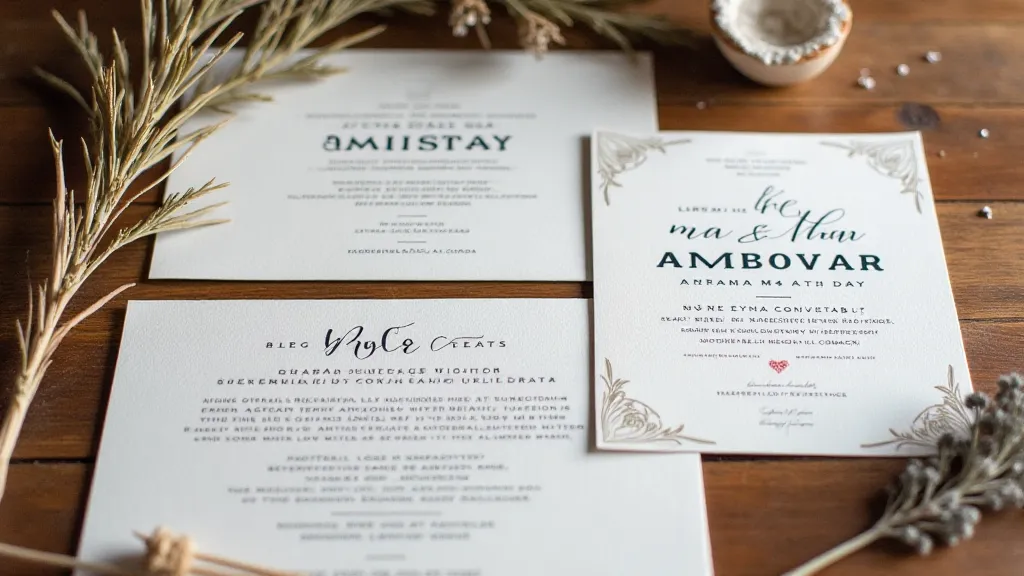
The Graphic Designer's Role: Mastering the Tactile Medium
Modern letterpress isn't just about the printing process; it’s also profoundly influenced by contemporary graphic design. Designers are carefully considering how their designs will translate to the letterpress medium. The limitations of the process—such as the depth of impression and the ink coverage—require thoughtful design decisions. Bold, impactful typography and simple, elegant layouts often work best. The constraints become opportunities for creativity, pushing designers to innovate and refine their approach. It's a collaborative effort, and understanding the intricacies of letterpress is paramount. When a design is perfectly suited to the process, the final product transcends mere printing; it becomes a work of art.
To truly excel in letterpress design, a deep understanding of the technical aspects is essential. Designers need to appreciate the nuances of plate preparation, ink properties, and the effect of pressure on different paper stocks. It's not simply a matter of creating a visually appealing design; it's about crafting a piece that will thrive within the unique constraints of the medium. Often, designers find themselves delving into the specific considerations for design considerations for letterpress to optimize the final impression and tactile experience.
The interplay between the graphic design and the letterpress process is crucial. Designers must understand the nuances of the printing technique to achieve their desired aesthetic, often collaborating closely with letterpress printers to ensure a successful outcome. This collaborative relationship is often what elevates a letterpress project from good to exceptional. Printers can offer invaluable insights into the technical possibilities and limitations of the process, while designers can bring their creative vision and aesthetic expertise to the table.
The Technical Nuances: Paper, Ink, and Pressure
The magic of letterpress lies not only in the visual impact but also in the sensory experience. The choice of paper is critical. Thick, luxurious papers with a distinct texture – like cotton, linen, or handmade paper – enhance the tactile quality and overall impression. The weight and feel of the paper significantly impact how the ink sits and the depth of the impression. Different paper stocks respond differently to the pressure, influencing the final result. Similarly, the type of ink used plays a crucial role. Oil-based inks generally provide richer colors and better coverage, while water-based inks offer a softer, more subtle feel. The pressure applied during printing determines the depth of the impression, which directly affects the visual and tactile impact of the finished piece. Mastering these technical elements is what separates a competent letterpress printer from a true artisan.
Crafting a Legacy: A Revival Rooted in History
The revival of letterpress printing is more than just a trend; it represents a renewed appreciation for craftsmanship, a desire for authenticity, and a connection to the history of printing. It's a testament to the enduring appeal of tangible art and a reminder that even in the digital age, there’s still magic to be found in the press. This contemporary resurgence guarantees that the legacy of letterpress printing will continue to inspire and captivate for generations to come. While digital printing offers speed and efficiency, letterpress provides something intangible – a sense of history, tradition, and the human touch.

The Future of Letterpress: Innovation and Adaptation
While steeped in tradition, letterpress is not static. Modern printers are experimenting with new techniques and technologies to push the boundaries of the craft. This includes using digital design tools to create intricate plates, incorporating mixed media elements, and exploring unconventional paper stocks and inks. Despite these innovations, the core principles of letterpress remain the same: a deep respect for the process, a commitment to quality, and a passion for creating beautiful, tangible objects. The collaboration between designer and printer is more vital than ever as the field evolves, ensuring that the art of letterpress continues to thrive and inspires for years to come.
